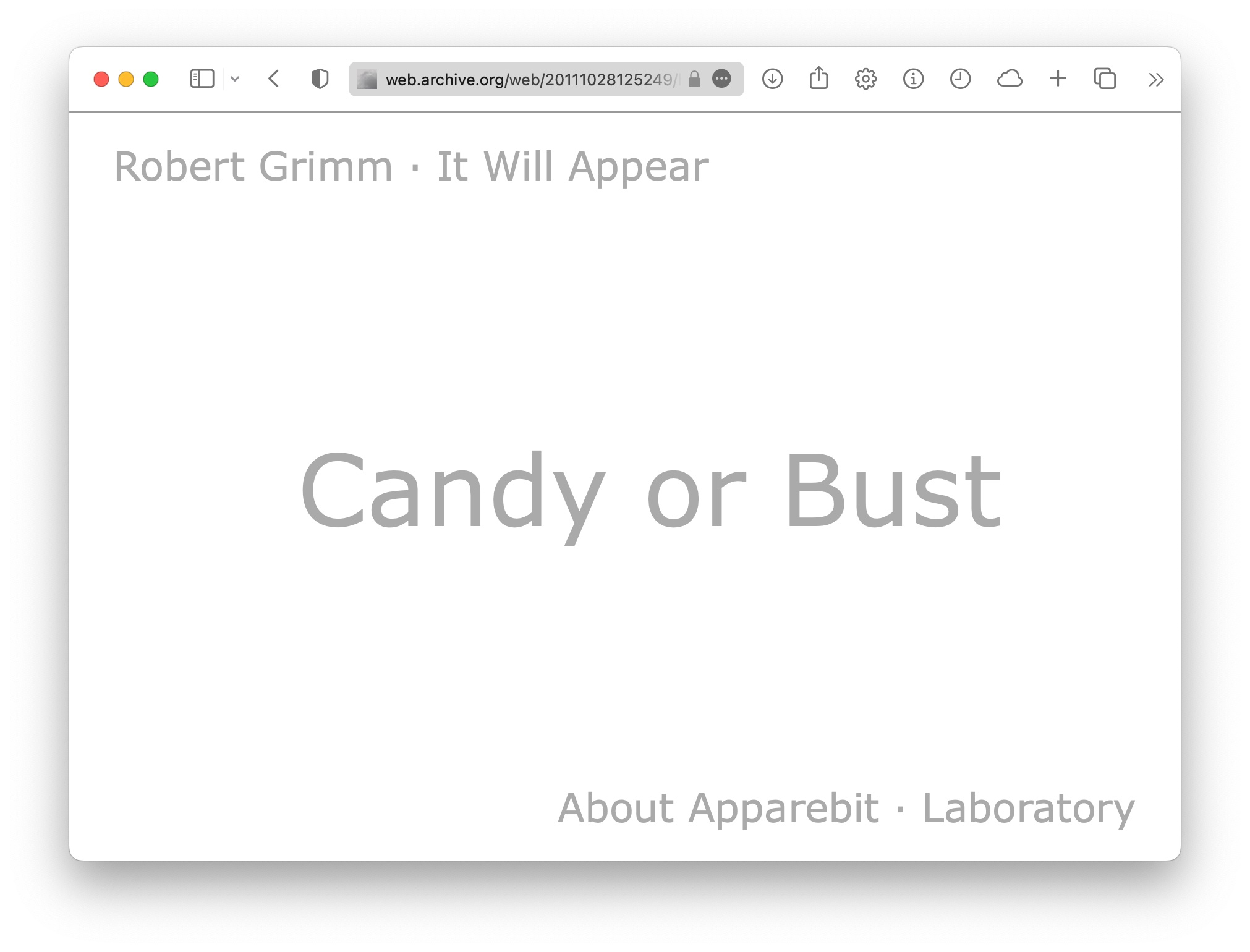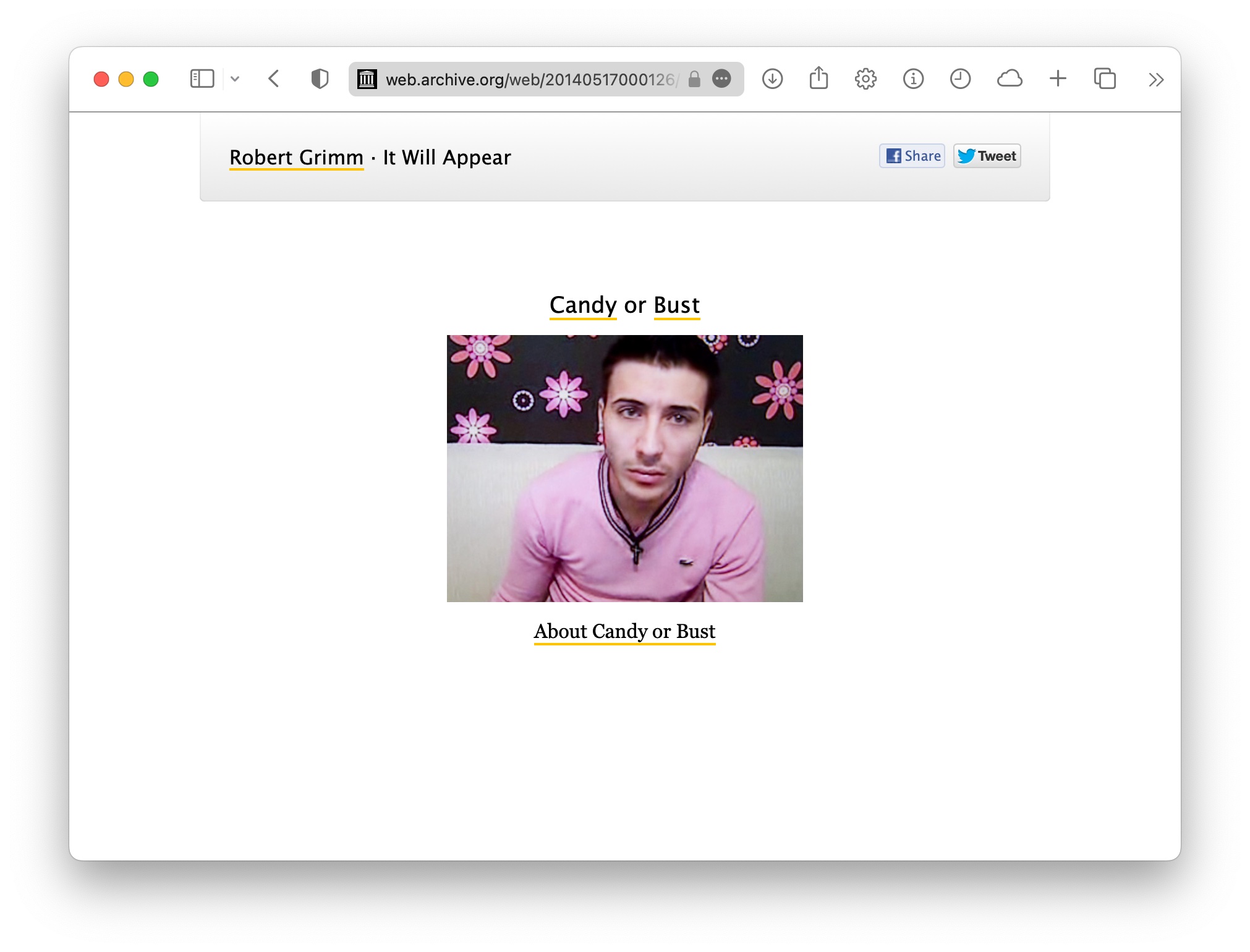About This Website
Introduction
The name Apparebit is the third-person singular future active indicative of the Latin verb appareo and translates to “it will appear.” It also is programmatic: I created this website around as a showcase for my photography. I then shifted the focus towards my writing in . I still hope to integrate my creative, technical, and scholarly output on this website — eventually.
History
So far, Apparebit has been through three major versions:
- The first version of Apparebit featured a rotating cast of photographs under a couple of headings and was utterly brutalist long before brutalist design became fashionable. It also fell short on information architecture, semantic markup, responsiveness, and accessibility. It did, however, feature a deliberate choice of typeface, Helvetica, an hitherto unacknowledged nod towards my first conscious use of a typeface, Akzidenz-Grotesk Buch, for a series of posters promoting gay dance parties in my hometown Würzburg during the late 1980s.

- The second version, released in , was rather serious, presenting my photography as art. Around the time, I did indeed participate in a couple of group shows and also won an award for my work. Whereas the first version fell short on best practices, the second version made up for it and then some. It was semantic, accessible, and most definitely responsive—with supported browsers ranging from Internet Explorer on the desktop down to dedicated web views after smartphone installation. Alas, the visual design itself was bland and utilitarian despite overindulging in subtle light gradients and shadows. I removed these visual embellishments , resulting in a design that was bland, utilitarian, and flat. Huzzah!

- Starting in , I was increasingly using Facebook as a de facto blog. But I was also becoming increasingly concerned about that highly toxic platform. The resulting effort towards a new design and new tooling was too ambitious at first. It still yielded considerable insight into architecture, visual appearance, typography, and workflows. But it never quite yielded usable tools or a new website. While working on a one-page side project, I realized that the difference between that self-contained page and a minimum viable Apparebit had shrunk to a couple of weeks of work and went for it. I launched the third version of Apparebit in and made the source repository public in .

At launch, Apparebit’s third version relied on a number of quick and dirty Node.js scripts. Those scripts subsequently became the core of the site:forge static website generator. I justify the tool’s existence by a somewhat unique design that eschews conventional niche languages for styling and templating and embraces view components written in JavaScript only for website-generation-time. Since that is a much simpler problem than interactive client interfaces, the view component runtime also is much simpler. It helps that site:forge meets my needs consistently and surprisingly well.
Domains
In addition to apparebit.com, this website currently uses two secondary domains that point to specific blog posts: deface.info links to my most recent report on Facebook’s crooked ways and obscenely.gay is just that — in a good and safe-for-work way! The two secondary domains not only provide short and memorable names for posts with topics dear to me. They also are surprisingly effective at amplifying traffic.
Typography
Apparebit’s current design features typefaces by contemporary designers from Argentina, France, and the United States. Body text throughout this website is set in Bely designed by Roxane Gataud and available through TypeTogether. The website’s logo and several pages’ headings use the rather distinctive Bely Display. Depending on content, headings on other pages may instead use one of the following typefaces:
- Bild designed by David Jonathan Ross and released through his Font of the Month Club;
- Bluu Suuperstar designed by Jean-Baptiste Morizot and released through Black Foundry;
- Reforma 2018 designed by Alejandro Lo Celso and released under the Creative Commons BY-ND 4.0 license.
- DejaVu Sans Mono based on Bitstream Vera Sans, originally designed by Jim Lyles, and released under its own permissive licenses.
FutureFonts and Ross’ Font of the Month Club are great resources for new type designs. Their typefaces may not always have the same selection of glyphs, OpenType features, or weights as those offered by more conventional, industrial foundries. They may also be very much in-progress. At the same time, they always are interesting and fresh. From an economic perspective, FutureFonts and the Font of the Month Club benefit users through often lower price points, while also providing independent type designers with some measure of a steady income. It’s a win-win for all parties involved!
Copyright
This website is Copyright 2019–2025 Robert Grimm. Unless explicitly noted, all rights for this website, its name, and its content are reserved by the author.
Some pages on this website may quote or depict creative works made by others. When such third-party works are included in an article or blog post on this website, they are quoted or depicted solely for commentary and criticism. Consistent with that purpose, third-party works appear only within the body of larger posts, but not in article covers or previews. All rights in such third-party works remain with their respective rights holders.
Acknowledgements
Over the years, the following people graciously helped with the realization of this website:
- Oliver Boberg
- Malik Graves-Pryor
- Akiko Kyei-Aboagye
- John Lindgren
- Jean-Baptiste Morizot
- Andrew Myers
- Annika Newell
- David Jonathan Ross
- Tim Taylor
- Karin Wolman
- Sandra Wolman
Thank y’all for your time and insight. They are much appreciated.